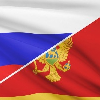Podgorica and Cetinje: two capitals of one country
This is an automatic translation.
Click here to read the publication in the original language.
PODGORITSA AND CETINA: TWO CAPITALS OF ONE COUNTRY
Often tourists are wondering why such a small country has as many as two capitals. Let's see how it happened so historically.Turning to Wikipedia, we will see that Montenegro does have two active capitals: Podgorica and Cetinje.
Podgorica is the actual capital, the center of business and economic life. Here is located one of the two airports, the Parliament, the Supreme Court and the Government. This is the largest and most developed city in the country - the scientific, economic and transport center of Montenegro. Most of the faculties of the Institute of Montenegro are located in Podgorica. The whole country is also going shopping here.
Cetinje is the cultural and historical capital of Montenegro. It attracts tourists with a large number of museums, libraries, ancient buildings and cozy streets with a European atmosphere, which are so nice to walk and rest from the exhausting heat (Cetinje is located farther from the coast and has a cooler climate). Cetinje is the official residence of the President of Montenegro.
A short digression into the history of the country will help us understand why the capitals are two.
CETINE
The city of Cetinje was founded in the 15th century, and for a long time it was the economic, cultural and religious center of Montenegro.It arose as a result of numerous wars with the Ottoman Empire, these wars and forced to move the capital from the fortified Zabljak to the more secure territory of the country. At the end of the XV century, the Royal Court was rebuilt, and a monastery appeared a little later. The name of the city was given by the river Cetina flowing along these places.
Cetinje has experienced numerous attacks from Turkey and Italy. During this period, the King's Court and the monastery were destroyed.
Prosperity to the city was brought by the dynasty of the Petroviches, during which the liberation wars were waged. The courtyard of the King was restored only in the beginning of the XIX century.
Montenegro gained independence in 1878, and Cetinje received the status of the capital of a European state.
Then beautiful new buildings appeared: consulates of different countries, the Women's Institute, the hospital and the hotel "Lokanda", the first apartment houses were built.
In 1910, Montenegro was recognized as a kingdom. At this time, Cetinje prospered! The whole elite of the country came here, which created a favorable ground for the development of culture and education.
After the I Balkan War and the World War I that followed, the city's progress was halted. In those years there were six newspapers in Cetinje and four printing houses. During the Austro-Hungarian occupation, the city was actually stolen. In World War II, Cetinje (like the whole of Yugoslavia) was captured by the Italian-German army.
During the break between the two World Wars, the territory of Cetinje expanded, but when the Parliament of Montenegro decided in 1946 to transfer administrative bodies to Podgorica (then Titograd), the prosperity of Cetinje ended.
After the end of World War II, the city actively developed light industry, built shoe and clothing manufactories.
Cetinje is not considered to be a city popular with tourists. But in fact, Cetinje is a cozy, calm and atmospheric town with many historical sights (the monastery of Cetinje, the Billiard House, the Royal Theater, museums and interesting embassy buildings in terms of architecture). In Cetina, you can also see the National Library, the archives of Montenegro, the National Museum, the Ethnographic Museum, Artistic and others.
In Cetina, you can visit exhibitions and cultural events. It is curious that it is here that the three most "creative" faculties of the University of Montenegro are based: the music academy, the faculty of drama, and the faculty of fine arts. And of course, the Ministry of Culture is also located here.
Thus, Cetinje has forever affirmed the status of the cultural capital of the country.
PODGORITSA
If Cetinje has an accent on cultural life, Podgorica has always had a predominantly economic direction. Already at the beginning of the 20th century (1904), the first bank in the country and the first tobacco plantation were founded here.The city was specialized in production and trade, and after the end of the Second World War, industrialization went on at a rapid pace. Near the city, enterprises of light, aluminum and tobacco industries began to expand. At the moment, other areas are developing: telecommunications, banking sector, representative offices of foreign companies.
Podgorica, like Cetinje, boasts an interesting past.
The Roman city of Birziminum, 3 kilometers from which was the settlement of Diocleta (also a Roman colony), was founded at the hill of Goritsa, from which the modern name was formed.
In the Middle Ages, these territories were part of the Serbian lands. In 1474 the city passed to the Turks, and from 1878 it was returned to Montenegro. Since 1946 Podgorica officially became the capital of Montenegro.
In 1952, there was another renaming: Podgorica became Titograd, and existed under this name until 1992.
After the Second World War, during which Podgorica suffered about 70 (!) Bombings, the city had to be rebuilt from scratch, so the historical image was only fragmented. Here you should take a look at such attractions as the Clock Tower, Vezirov Bridge, the ruins of the ancient Doklei, the Church of St. George and the remains of the Turkish fortress. Since the middle of the 20th century, Podgorica has acquired a new architecture: new monuments and sights have appeared, such as monuments to Vysotsky and Pushkin, the largest church in the country of the Resurrection of Christ, the Millennium Bridges ...
To be continued…
Daria Zorina
#DariaZorina
This is an automatic translation.
Click here to read the publication in the original language.






































